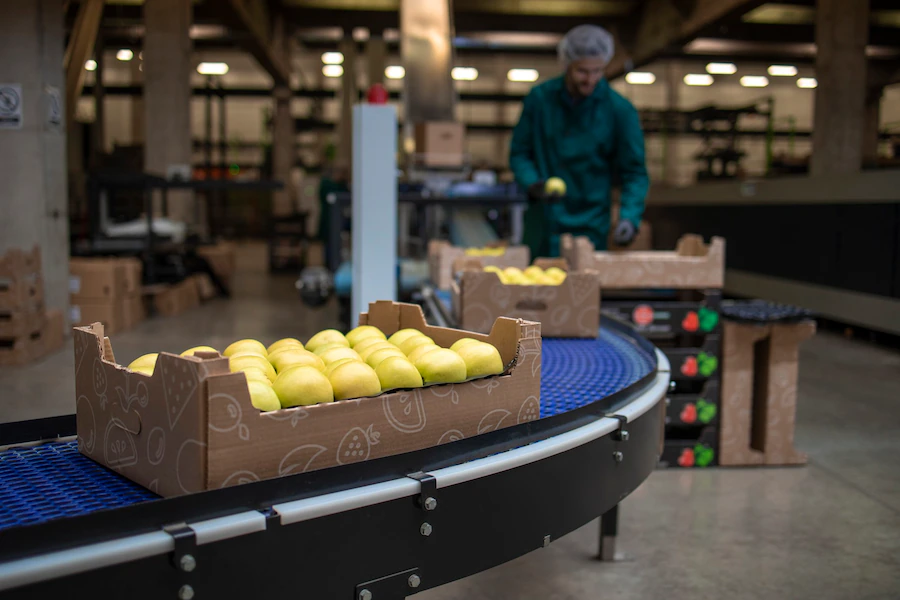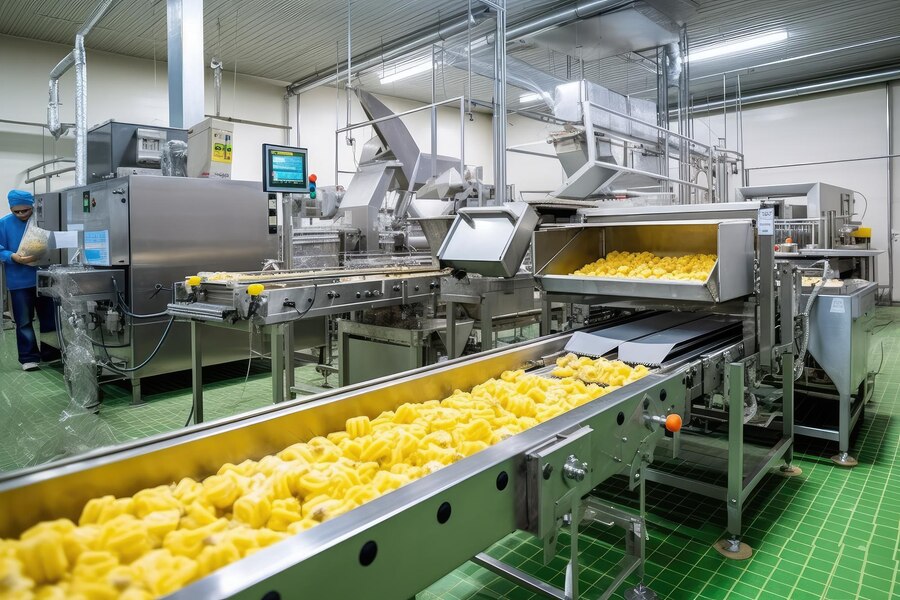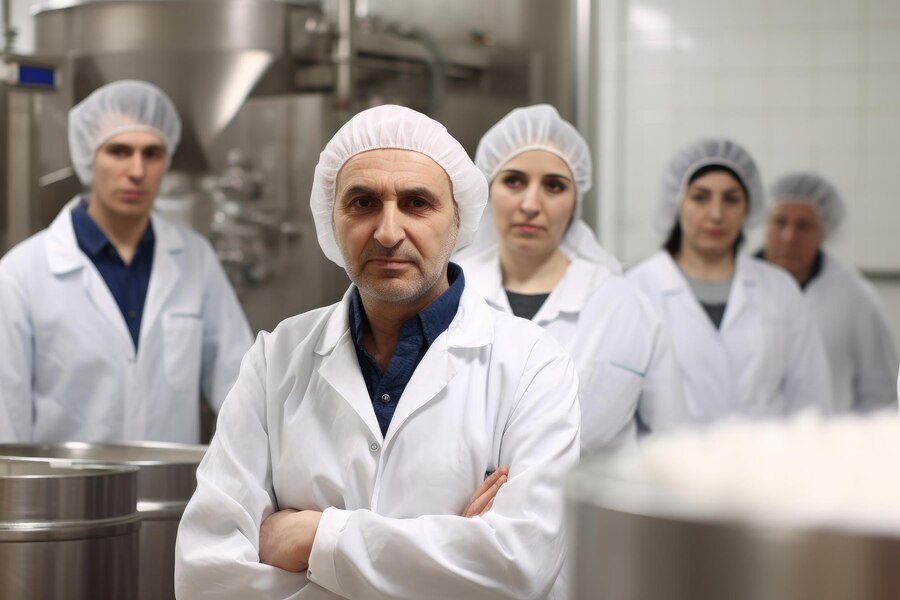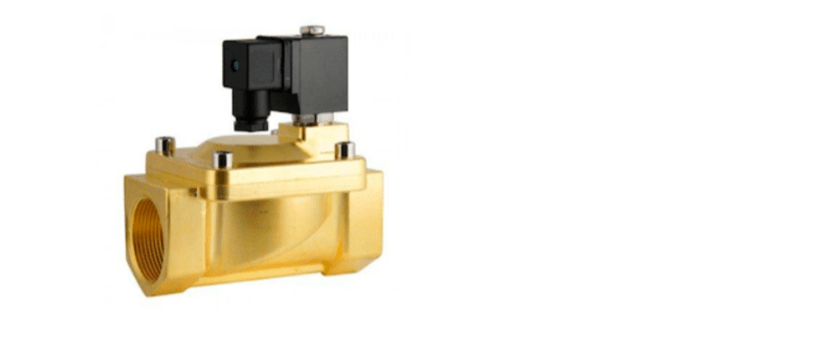Strategies For Strengthening Food Processing Lines: A Guide
5 Mins Read
Published on: 18 January 2024
Last Updated on: 08 April 2025

toc impalement
Efficient food processing is the backbone of the food industry, ensuring the timely production of high-quality goods.
However, in the complex world of food processing, challenges abound. From bottlenecks in production lines to the ever-changing landscape of regulations, there’s a constant need for strategies that strengthen these critical processes.
Nine Crucial Ideas For Strengthening Food Processing Lines
Here are some practical and actionable insights for enhancing food processing lines.
1. Assessing Current Processes

Efficiency is the cornerstone of a successful food processing line, and a meticulous assessment of current processes is the starting point. Leveraging data analytics enables businesses to uncover bottlenecks and inefficiencies. Start by employing software tools that provide real-time insights into production metrics.
Regularly review this data to identify patterns and areas for improvement. Consider cross-functional collaboration between production and data analysis teams to gain a holistic perspective. Businesses can make informed decisions to streamline their operations effectively by focusing on a data-driven approach to process evaluation.
2. Automation Integration
Automation Integration is not about introducing advanced machinery but involves strategically evaluating where automation can bring the most significant impact. Identify repetitive and time-consuming tasks that can be automated without compromising quality. Conduct a thorough cost-benefit analysis to determine the feasibility of automation for specific processes.
Collaborate with automation experts and suppliers to choose the technology tailored to your production needs. Prioritise scalability and flexibility to accommodate future changes. Businesses can optimise efficiency and achieve a sustainable return on investment by taking a targeted and calculated approach to automation.
3. Quality Control Measures
Ensuring the highest product quality requires a multifaceted approach to Quality Control Measures. Implement advanced sensing technologies and monitoring systems throughout the production line. Integrate automated inspection processes to detect defects in real-time. Establish a robust feedback loop between quality control and production teams to address issues promptly.
Invest in employee training programs to enhance their understanding of quality standards and their role in maintaining them. By combining technology with a well-trained workforce and a proactive quality control strategy, businesses can consistently deliver products that meet or exceed customer expectations.
4. Supply Chain Optimisation
Supply chain optimization is about creating a streamlined and responsive network. Start by conducting a comprehensive analysis of your current supply chain, identifying pain points and areas for improvement. Establish clear communication channels with suppliers to ensure timely and accurate deliveries.
Consider implementing supply chain management software to enhance visibility and control. Collaborate with logistics experts to design efficient transportation routes. Regularly reassess and adjust the supply chain strategy to adapt to changing market conditions.
Reliable equipment also plays a key role in overall supply chain efficiency. For example, incorporating a high-quality wire mesh conveyor belt into your production line can help prevent unexpected breakdowns, improve throughput, and support consistent product handling – all of which contribute to a smoother, more dependable operation. A well-optimized supply chain reduces costs and ensures a resilient and agile production process.
5. Employee Training And Engagement

Employee Training and Engagement are crucial elements in fostering an environment of continuous improvement. Develop a comprehensive training program that covers technical skills and emphasizes the importance of innovation and problem-solving. Create a culture of engagement by encouraging open communication and feedback. Provide opportunities for skill development and career advancement to motivate employees.
Recognize and reward contributions to efficiency improvements. By investing in your workforce’s professional growth and engagement, you enhance their individual capabilities and cultivate a collective commitment to operational excellence.
6. Sustainable Practices
Sustainable food-processing Practices contribute to both environmental stewardship and long-term business viability. Start by conducting an environmental impact assessment of your operations. Identify areas where waste can be reduced, energy consumption minimized, and eco-friendly alternatives adopted. Collaborate with suppliers who share your commitment to sustainability. Implement recycling and waste reduction programs within the facility.
Regularly review and update sustainability initiatives to align with evolving standards. Integrating environmentally conscious practices into the production process means businesses can reduce their ecological footprint and appeal to an increasingly environmentally aware consumer base.
7. Technology Upgradation
Staying ahead in the food processing industry requires a commitment to technological advancement. Regularly assess your technology stack and identify areas for improvement. Embrace the Internet of Things (IoT) to enable real-time monitoring and data-driven decision-making.
Invest in data analytics tools that provide actionable insights. Collaborate with technology experts and attend industry conferences to stay abreast of emerging trends. Ensure that technology upgrades align with your business goals and are implemented with minimal disruption.
As part of this process, consider investing in advanced laboratory equipment, such as Karl Fischer titrators. These titrators are crucial in assessing moisture content, a vital parameter in food processing.
If you want to learn more, explore the KF titrators at Metrohm. By incorporating precise and efficient instruments, businesses can enhance the accuracy of their quality control measures, ensuring products meet the highest standards. This targeted technology investment not only improves the overall reliability of the production process but also contributes to the efficiency and consistency of the final product.
8. Regulatory Compliance
Navigating Regulatory Compliance is about staying vigilant and proactive. Regularly review and update your understanding of food processing regulations relevant to your industry. Establish a compliance team responsible for monitoring regulation changes and ensuring processes align with them. Implement technology solutions that facilitate compliance tracking and reporting. Engage legal experts to guide on complex regulatory issues. Regularly conduct internal audits to identify and address potential compliance gaps.
Leverage software solutions specifically designed for regulatory compliance management. These tools can streamline documentation processes, track regulation changes, and facilitate audit preparations. Additionally, consider investing in training programs that keep your team well-informed about evolving compliance requirements.
9. Continuous Improvement Strategies

Continuous Improvement Strategies require a cultural shift towards a mindset of perpetual refinement. Establish key performance indicators (KPIs) that align with overall business goals. Implement methodologies to identify and eliminate inefficiencies. Foster a culture that encourages employees to share insights and suggestions for improvement. Regularly review and reassess processes to identify opportunities for refinement.
Consider implementing continuous improvement software that allows for the tracking and analysis of KPIs in real-time. This technology facilitates a proactive approach to identifying areas for enhancement, enabling swift decision-making.
Encourage employees to participate in improvement initiatives by providing platforms for suggestions and feedback. By institutionalizing a commitment to continuous improvement, businesses can adapt to evolving market conditions and position themselves as leaders in efficiency and innovation.
The Bottom Line
The strategies outlined above provide a comprehensive guide for strengthening food processing lines. Assessing and addressing inefficiencies, embracing automation, ensuring quality control, and optimizing the supply chain are key steps toward a more robust and efficient processing line.
Businesses can successfully navigate the food processing industry’s complexities by investing in employee training, adopting sustainable practices, and staying abreast of technological advancements and regulatory compliance.
Read Also:


















Comments Are Closed For This Article